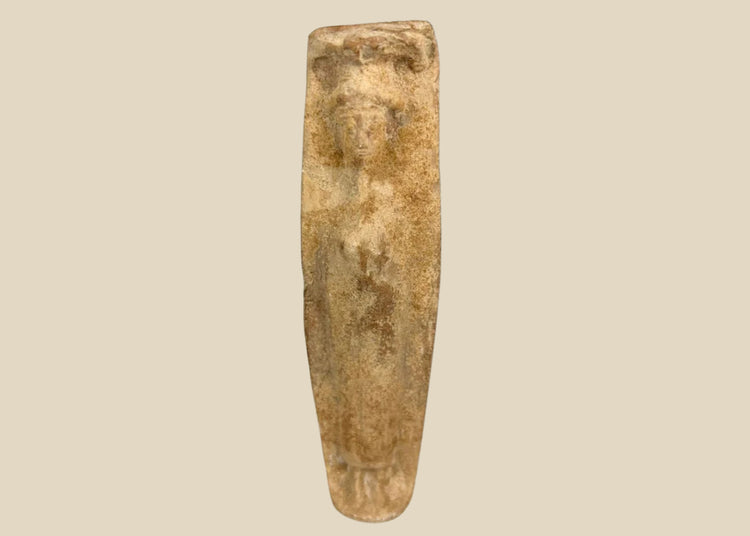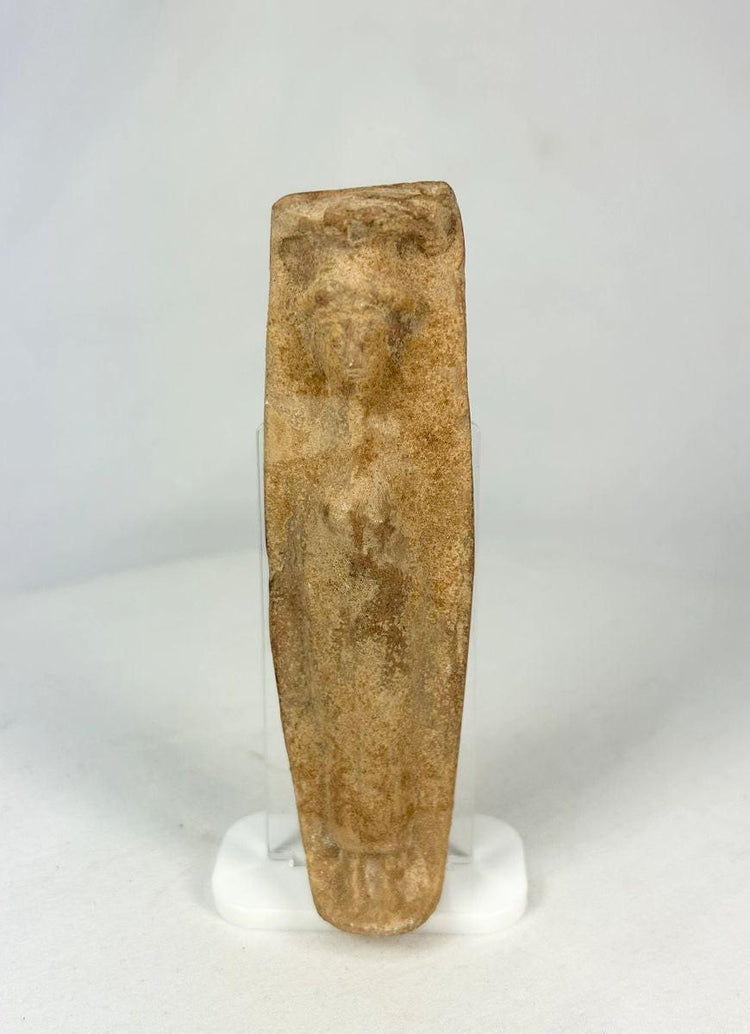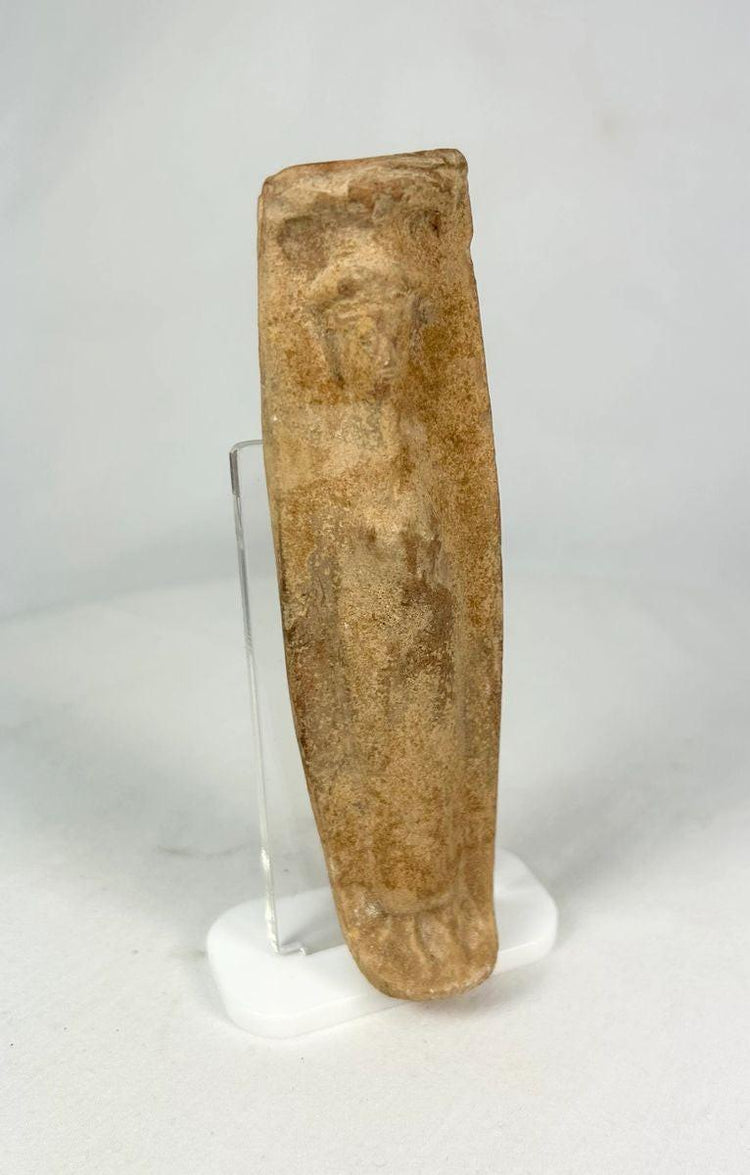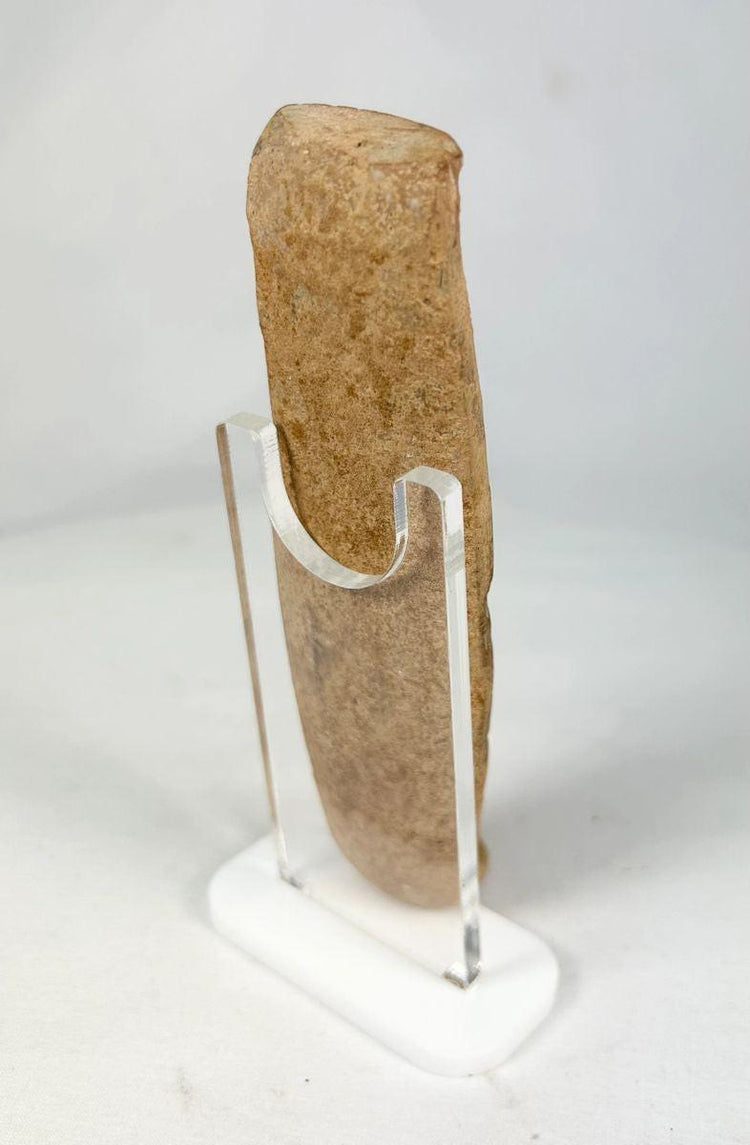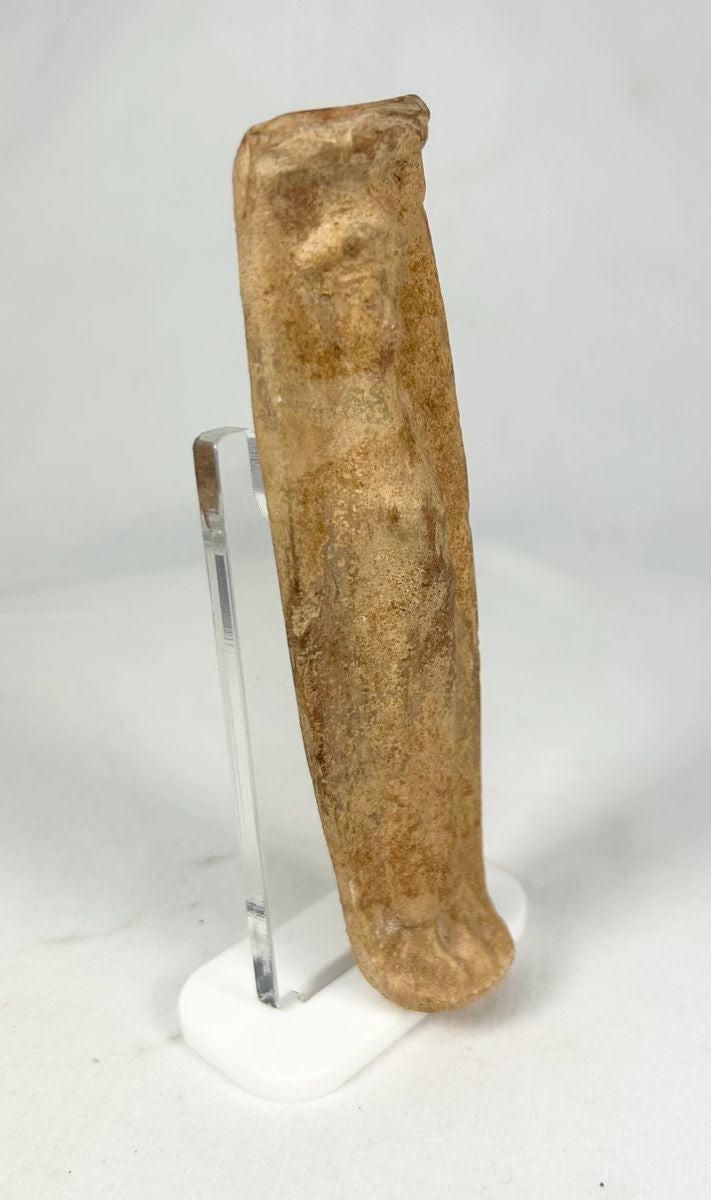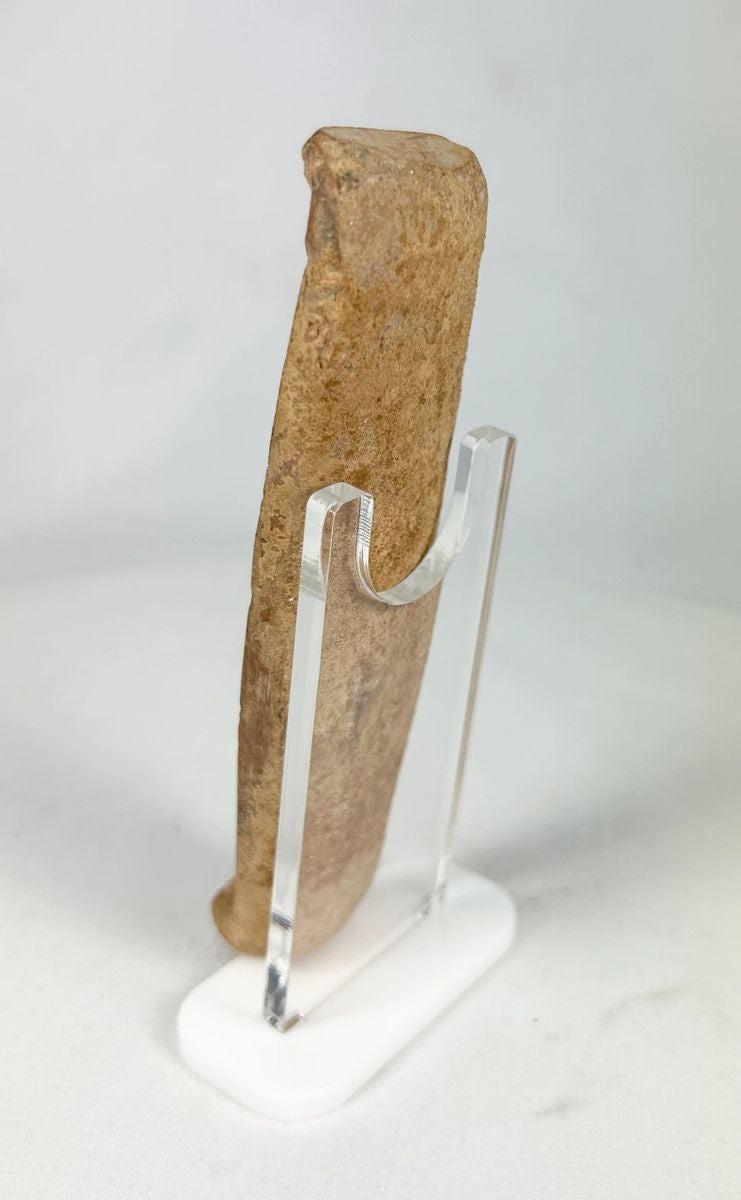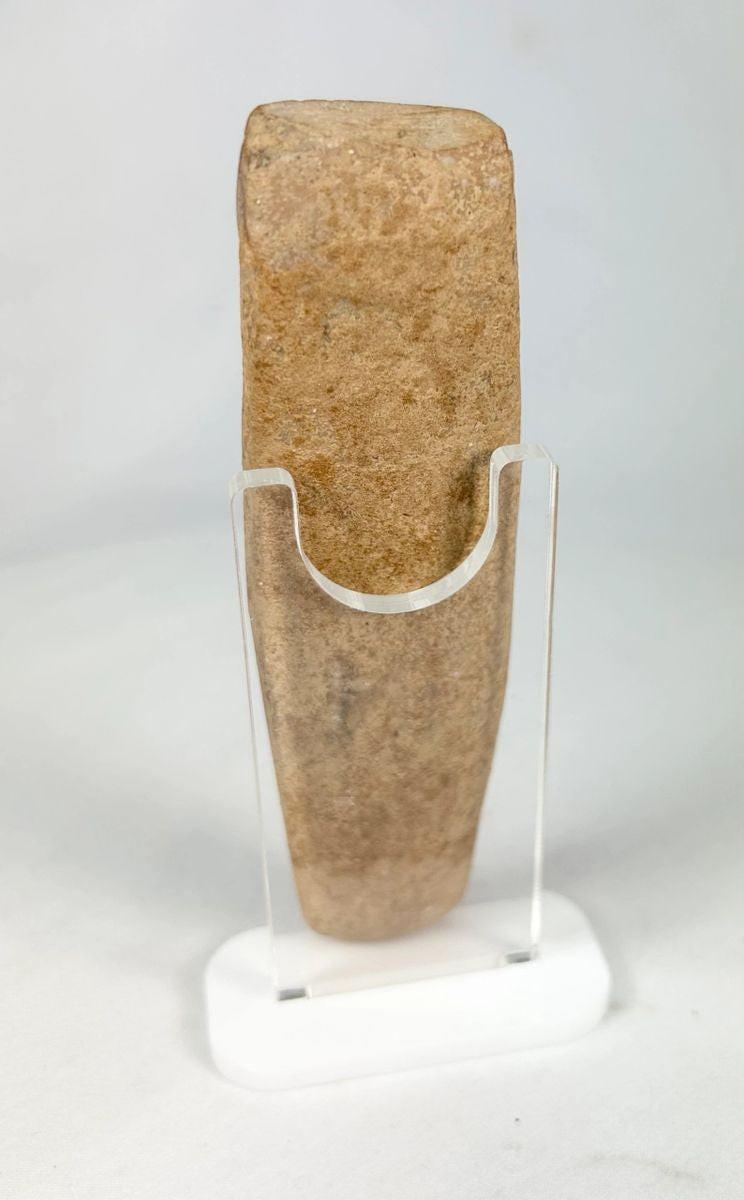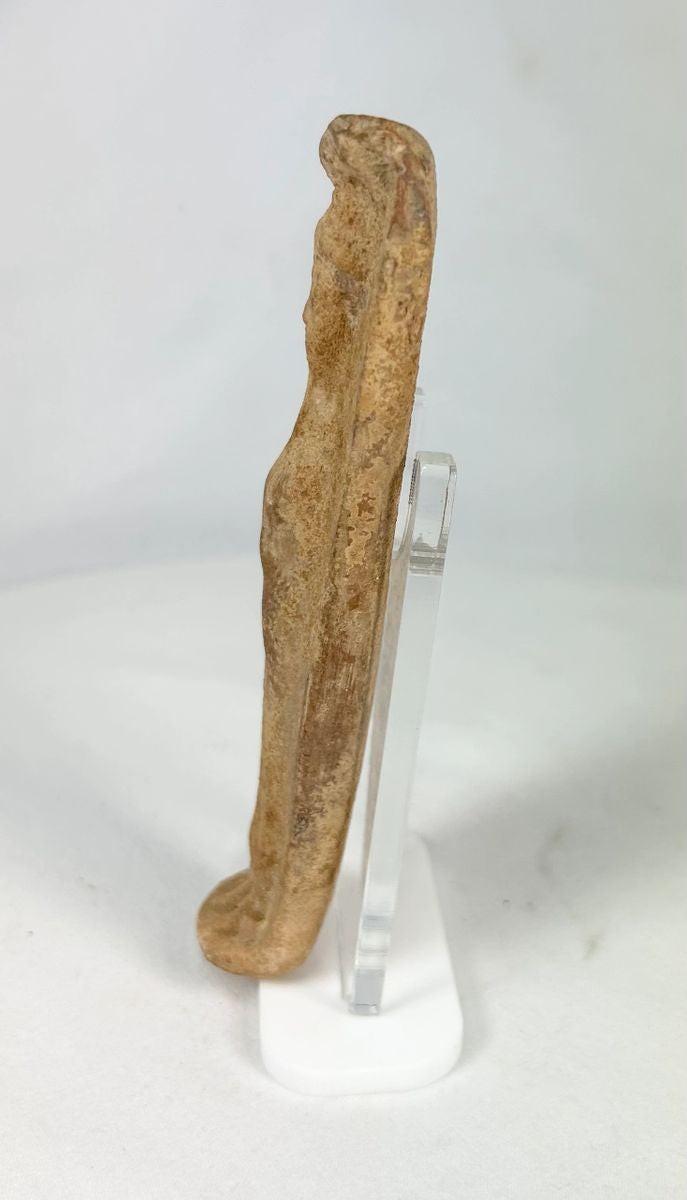Ancient Roman | Fertility Pottery Figure | Circa 1st-3rd Century CE
Description
More
Less
Historical Context & Origin
Region: Ancient Roman Empire
Material: Terracotta clay
Period: 1st–3rd Century CE
Description
This terracotta fertility figure originates from the Roman world, a civilization where household rituals, temple offerings, and fertility cult practices formed a vital part of daily life. Figures such as this were placed in shrines, homes, or burials to invoke divine blessings of fertility, prosperity, and protection. The stylized form, with faint facial details and an enshrouded shape, suggests symbolic rather than naturalistic representation, evoking themes of rebirth and divine presence.
Features
- Hand-molded from coarse terracotta clay
- Natural earthen patina with mineral deposits from burial
- Stylized human form with traces of facial features
- Wrapping/enclosure motif symbolic of rebirth and protection
- Compact votive size for household or shrine use
Cultural Significance
Fertility figures like this one were connected to goddesses such as Venus and Ceres, central to Roman religious life. They were widely used across social classes, serving both elite and common households as votive offerings or protective charms. Buried with the deceased, such figures ensured divine favor and spiritual protection in the afterlife. This example embodies the Roman blending of art, devotion, and daily ritual practice.
Condition
The figure shows natural surface wear and weathering consistent with age, while retaining a stable structure. Patination and mineral accretions highlight its antiquity. No major cracks or repairs detected.
Dimensions (approximate)
Height: 5 in
Age
Approximately 1,700–1,900 years old
Description
Historical Context & Origin
Region: Ancient Roman Empire
Material: Terracotta clay
Period: 1st–3rd Century CE
Description
This terracotta fertility figure originates from the Roman world, a civilization where household rituals, temple offerings, and fertility cult practices formed a vital part of daily life. Figures such as this were placed in shrines, homes, or burials to invoke divine blessings of fertility, prosperity, and protection. The stylized form, with faint facial details and an enshrouded shape, suggests symbolic rather than naturalistic representation, evoking themes of rebirth and divine presence.
Features
- Hand-molded from coarse terracotta clay
- Natural earthen patina with mineral deposits from burial
- Stylized human form with traces of facial features
- Wrapping/enclosure motif symbolic of rebirth and protection
- Compact votive size for household or shrine use
Cultural Significance
Fertility figures like this one were connected to goddesses such as Venus and Ceres, central to Roman religious life. They were widely used across social classes, serving both elite and common households as votive offerings or protective charms. Buried with the deceased, such figures ensured divine favor and spiritual protection in the afterlife. This example embodies the Roman blending of art, devotion, and daily ritual practice.
Condition
The figure shows natural surface wear and weathering consistent with age, while retaining a stable structure. Patination and mineral accretions highlight its antiquity. No major cracks or repairs detected.
Dimensions (approximate)
Height: 5 in
Age
Approximately 1,700–1,900 years old
You May Also Like




























